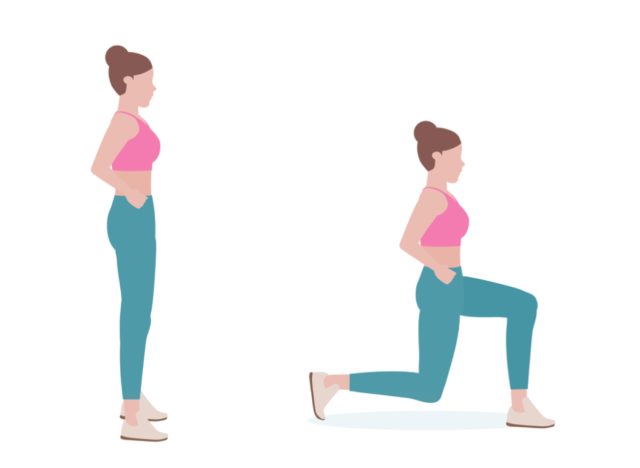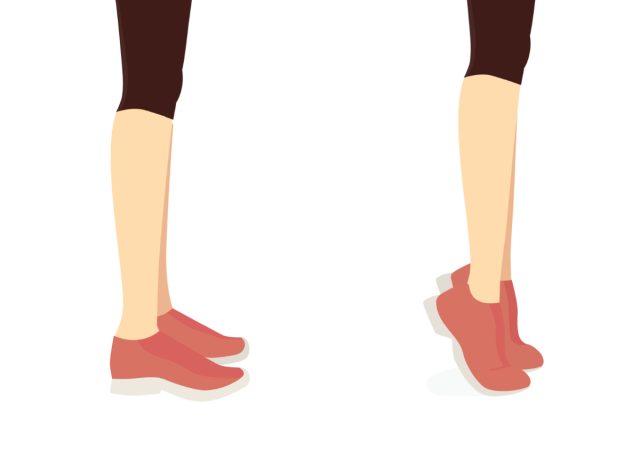The Best Walking Workout To Build Lower-Body Strength

Are you on a mission to build lower-body strength and tone your legs? If so, walking may be the perfect workout for you. While often overlooked, walking is a fantastic exercise to improve your fitness, burn calories, and strengthen your lower-body muscles. We chatted with Kyrie Furr, CPT, a certified personal trainer and performance coach with Barbend, who shares the #1 best walking workout to build lower-body strength, regardless of whether you're new to walking or are an experienced athlete looking to switch up your workout regimen.
Walking is a low-impact exercise that's gentle on the joints yet effective in strengthening your muscles and improving cardiovascular health. Research shows that incorporating lower-body training into your workouts is critical for overall strength, power, and stability. Additionally, walking outdoors allows you to enjoy nature and fresh air, which can improve your mental well-being and promote healthy aging.
Walking is incredibly accessible, as most people can do it pretty much anytime, anywhere. Moreover, this walking workout for lower-body strength can also be tailored to suit your fitness levels and goals.
To perform this walking workout, Furr instructs, "Start with a brisk walk, swinging your arms naturally. Focus on engaging your core muscles and maintaining a steady pace. Pick one or multiple movements to complete periodically throughout your workout."
Read on for the exercises and detailed instructions on how to complete our best walking workout for lower-body strength.
Walking Lunges

Walking lunges are a fantastic exercise for building lower-body strength since they target your quadriceps, hamstrings, and glutes.
To perform walking lunges, Furr instructs, "Begin by standing tall with your feet hip-width apart. Step forward with your right leg and lower your body until your right thigh is parallel to the ground and your left knee nearly touches the ground. Push off your right foot and bring it forward to meet your left foot. Repeat on the opposite side." Complete three to five sets of 12 lunges per leg, followed by one minute of rest before moving on to the next exercise.
Hill Climbing
Hill climbing is an excellent way to challenge your lower body and boost strength. A 2020 study found that incline walking activates more muscles in the lower body than level (or "flat") walking.
Find a steep hill or use a treadmill on an incline setting. Walk uphill, focusing on pushing through your heels to engage your glutes and hamstrings. This workout not only builds strength but also improves cardiovascular fitness and endurance. Do this for five to 10 minutes for a serious leg burn.
Walking Squats
This traditional squat variation adds a dynamic element to this classic lower-body exercise, helping boost your cardiovascular well-being while building leg strength.
"Start with your feet shoulder-width apart. Lower your body into a squat position, keeping your back straight and chest up. Push through your heels to stand up, then take a step forward with your right foot and repeat the squat. Alternate legs as you walk," explains Furr. Aim for three to five sets of 10 to 12 reps with one minute of rest between sets.
Calf Raises

Calf raises are a simple yet effective exercise for strengthening the calf muscles at the back of your lower legs. Studies show that calf raises can help boost ankle stability and prevent injuries.
Furr says, "Stand with your feet hip-width apart and slowly lift your heels off the ground, rising onto your toes. Hold for a moment, then lower back down." Do three to five sets of 15 to 20 calf raises. Rest for one minute between sets.
Side Steps with Resistance Bands

Side steps with resistance bands are a stellar movement targeting the muscles in your outer thighs and hips for increased lower-body strength and overall stability.
"Place a resistance band around your ankles," instructs Furr. "Stand with your feet shoulder-width apart and knees slightly bent. Step to the side with your right foot, followed by your left foot, maintaining tension in the resistance band. Take 10 steps to the right, then 10 to the left." Perform three to five sets of 10 steps per leg with one minute of rest between sets.
- Source: https://www.ncbi.nlm.nih.gov/pmc/articles/PMC8841590/
- Source: https://www.ncbi.nlm.nih.gov/books/NBK544978/
- Source: https://www.nhlbi.nih.gov/news/2022/national-walking-day-nih-researcher-available-discuss-heart-healthy-benefits-walking
- Source: https://pubmed.ncbi.nlm.nih.gov/29257792/
- Source: https://pubmed.ncbi.nlm.nih.gov/36318361/
- Source: https://www.ncbi.nlm.nih.gov/pmc/articles/PMC7458279/









